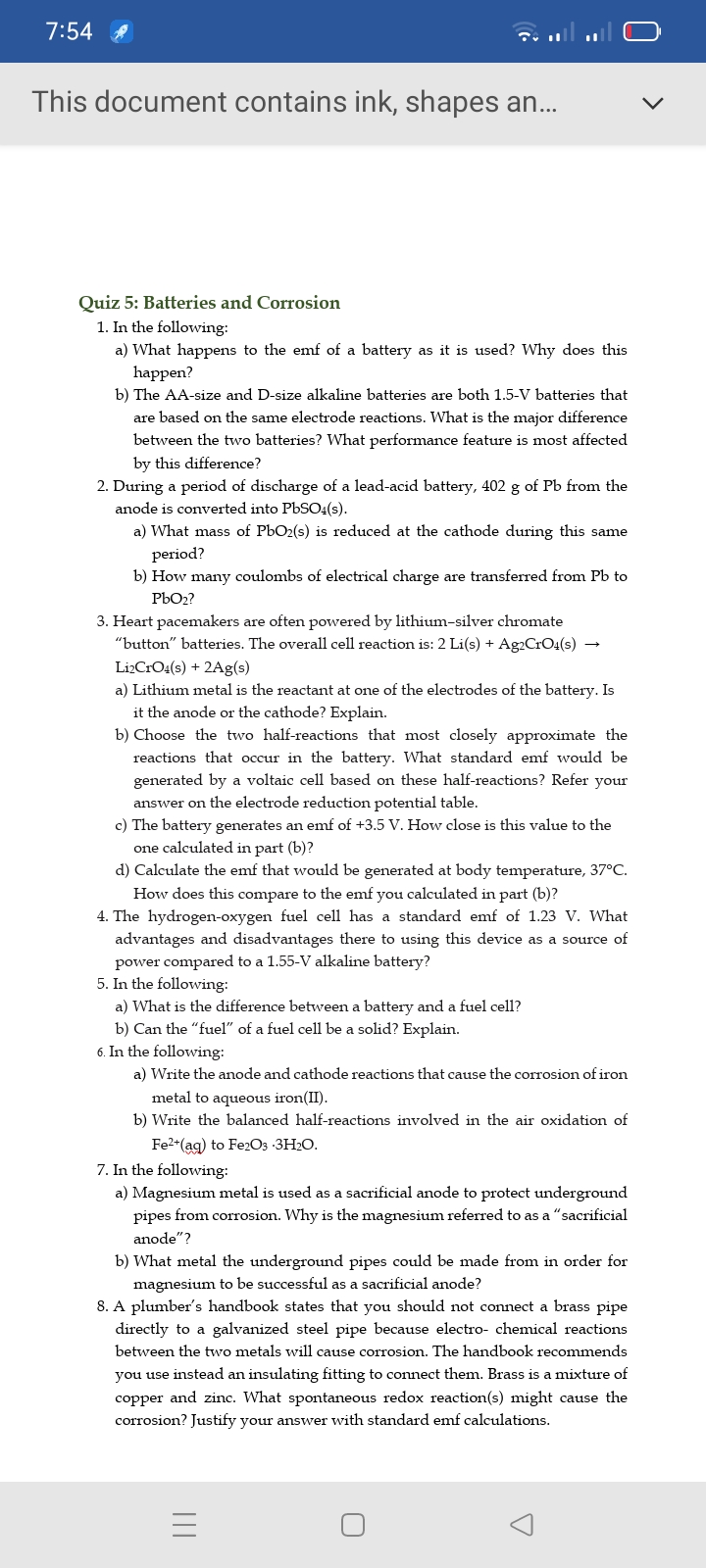Heart pacemakers are often powered by lithium–silver chromate “button” batteries. The overall cell reaction is: 2 Li(s) + Ag2CrO4(s) → Li2CrO4(s) + 2Ag(s) a) Lithium metal is the reactant at one of the electrodes of the battery. Is it the anode or the cathode? Explain. b) Choose the two half-reactions that most closely approximate the reactions that occur in the battery. What standard emf would be generated by a voltaic cell based on these half-reactions? Refer your answer on the electrode reduction potential table. c) The battery generates an emf of +3.5 V. How close is this value to the one calculated in part (b)? d) Calculate the emf that would be generated at body temperature, 37°C. How does this compare to the emf you calculated in part (b)?
3. Heart pacemakers are often powered by lithium–silver chromate “button” batteries. The overall cell reaction is: 2 Li(s) + Ag2CrO4(s) → Li2CrO4(s) + 2Ag(s)
a) Lithium metal is the reactant at one of the electrodes of the battery. Is it the anode or the cathode? Explain.
b) Choose the two half-reactions that most closely approximate the reactions that occur in the battery. What standard emf would be generated by a voltaic cell based on these half-reactions? Refer your answer on the electrode reduction potential table.
c) The battery generates an emf of +3.5 V. How close is this value to the one calculated in part (b)?
d) Calculate the emf that would be generated at body temperature, 37°C. How does this compare to the emf you calculated in part (b)?
?

Trending now
This is a popular solution!
Step by step
Solved in 2 steps with 2 images









